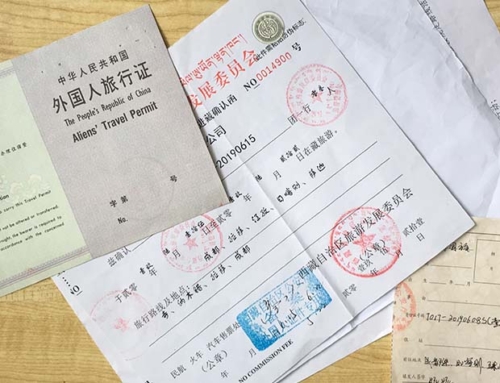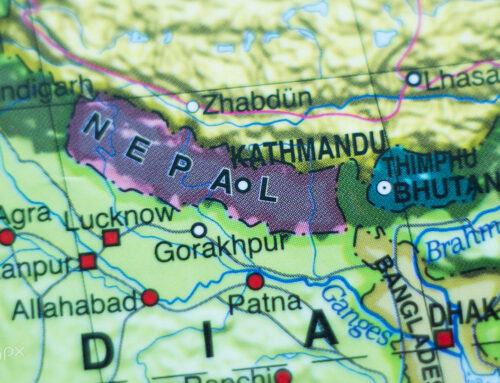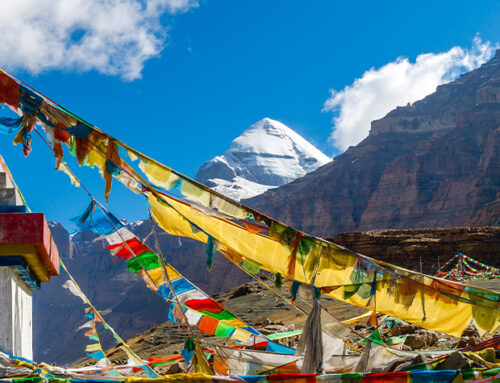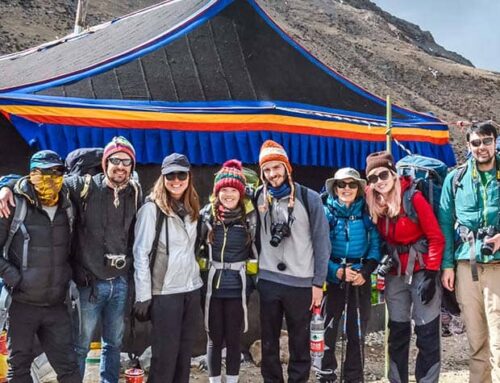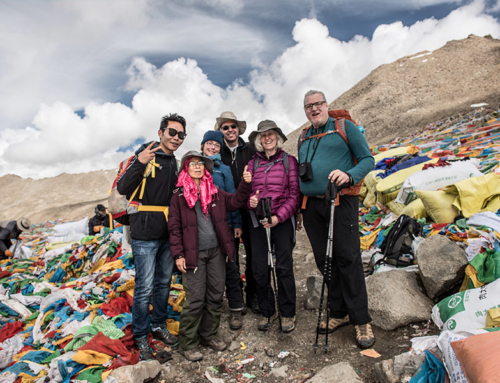Acclimatization in Tibet. A journey to the mystical landscapes of Tibet, often referred to as the “roof of the world,” promises unparalleled cultural experiences and breathtaking vistas. Yet, the enchanting heights of this region come with a unique set of challenges, primarily centered around acclimatization to high altitudes. Inadequate preparation can lead to Acute Mountain Sickness (AMS), a serious condition that demands meticulous consideration for travelers venturing above 2,500 meters.
Understanding the Impact of Low Oxygen in Tibet:
The fundamental factor contributing to AMS is the lower oxygen levels prevalent at higher elevations. The Earth’s gravitational pull causes air to thin as altitude increases, creating an environment where oxygen is scarce. For individuals accustomed to lower elevations, acclimatization becomes a crucial aspect of their journey to avoid the adverse effects of thinner air in Tibet.
Altitudes in Tibet:
The Qinghai Tibetan Plateau, which encompasses Tibet, stands as the epitome of the roof of the world. With an average elevation surpassing 4,500 meters above sea level, this region is surrounded by formidable mountain ranges, including the iconic Himalayas and Kunlun. While offering breathtaking views of nature, the high altitudes also present challenges for travelers, making acclimatization in Tibet, an essential aspect of any visit.
Symptoms and Levels of AMS:
AMS manifests in various symptoms, ranging from mild discomforts such as headaches, dizziness, and sleeplessness to more severe conditions like vomiting and declining mental status. Understanding the severity of AMS is vital for proper care. Mild symptoms can typically be managed with rest and medication, while moderate cases may require descent to lower altitudes. Severe AMS demands immediate evacuation, oxygen therapy, and advanced medical intervention.
Acclimatization Guidelines:
- Ascend Slowly: The cornerstone of acclimatization is a gradual ascent. Spending two days in Xining or Nyingchi, followed by three days in Lhasa, allows the body to adjust gradually to the changing altitude.
- Stay Hydrated: Counteracting fluid loss due to acclimatization is crucial. Drinking plenty of water, supplemented with oral rehydration salts, juice, and soups, ensures adequate hydration.
- Travel High, Sleep Low: Optimizing acclimatization during sleep involves spending the day at higher altitudes and nights at lower elevations.
- Avoid Exhaustion: Given the challenges of low-oxygen environments, limiting physical exertion is paramount to prevent headaches, nausea, and other symptoms associated with high-altitude travel.
- Avoid Alcohol: Refraining from alcohol and other drugs during your Tibet trip is crucial to prevent respiratory complications during sleep.
- Keep Warm: Maintaining body temperature is essential, necessitating the constant use of additional layers to avoid complications associated with low temperatures.
- Carbohydrate-Rich Diet: A diet rich in carbohydrates aids absorption and sustains energy levels in low-oxygen conditions.
- Medication for AMS: Consulting a doctor for suitable medication is advisable, as most drugs for high altitudes need to be taken in advance.
- Carry an Oxygen Cylinder: For travelers with responsible travel agencies, oxygen cylinders are typically provided. For those with other travel arrangements, arranging for a small oxygen cylinder is recommended.
- Choose a Responsible Travel Agency: Selecting a legal and reputable travel agency is paramount to ensure a safe and well-guided experience.
Myth on Acclimatization in Tibet:
Many Travel Website do mention Taking train to Tibet reduce the risk of high altitude sickness. But Taking train to Tibet doesnt help as all the train to Tibet are pressurise and built with onboard oxgyen generator. Hence there is no reduce of oxygen in train as it is on actual ground. So taking train to Tibet doesnt help at all in Acclimatize
Conclusion Acclimatization in Tibet:
Acclimatization in Tibet is not merely a precautionary measure; it is a necessity for a safe and enjoyable journey. Understanding the risks, recognizing symptoms, and following comprehensive guidelines are crucial components of a successful trip to this mesmerizing region. By prioritizing acclimatization and choosing a responsible Tibetan travel agency in Tibet, travelers can embark on a journey that seamlessly combines the wonders of Tibet with the assurance of well-being, creating lasting memories in one of the world’s most enchanting destinations.
Recommend Reading
Recommend Reading
- Tibet
- About i-Tibet Travel
- Tibet Tour Packages
- Tibet Tours, a travel options in Tibet
- Tibet Travel Informations
- Tibet Travel Permit
- Tibetan Travel Agency in Tibet
- Tibet Travel Planner
- Tourism in Tibet
- Is oxygen available on the train to tibet
- Tibet Train
- What are the symptoms of high altitude sickness?
I Tibet Travel & Tours is a local travel agency in Tibet that offers unique and authentic experiences to travelers from all around the world. As a leading tour operator in Tibet, we provide high-quality Tibet Travel services that are tailored to our clients’ needs and preferences.
Our team of experienced and knowledgeable professionals strives to ensure that our clients have a hassle-free and memorable Tibet Tour. We specialize in various types of tours, including cultural tours, trekking and hiking tours, and adventure tours.
Our commitment to providing exceptional service has earned us a reputation as one of the best local travel agencies in Tibet. Contact us today to plan your unforgettable trip to Tibet.
Explore Tibet with a local Tibetan Travel Agency
If you’re looking to explore Tibet, starting your journey with a reputable Tibetan travel agency in Tibet is crucial. Tibet Travel & Tours is a great choice to begin your adventure with their extensive knowledge of the region and commitment to responsible tourism.
Their Tibet tour packages cater to a range of interests and budgets, making it easy to plan a trip that suits your needs. Before embarking on your tibet tour, it’s essential to have the right Tibet travel information and necessary documents, including a Tibet travel permit.
The Tibet Travel Planner provided by i-Tibet travel is an excellent resource to plan your trip, including tips on what to pack, where to stay, and what to see.
For beginners, the “About Tibet” guide provided by i-Tibet travel offers a comprehensive overview of the region’s history, culture, and top attractions. So, start your Tibet travel plan here with i-Tibet travel and discover the magic of Tibet for yourself.



